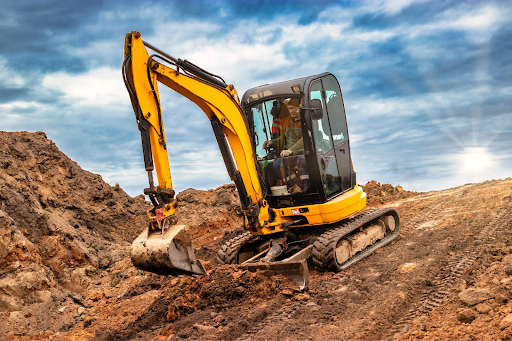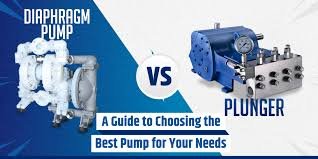Downtime is a word no construction manager wants to hear. When an excavator sits idle because of a part failure, costs add up quickly. You lose labor hours, miss deadlines, and scramble to find a replacement. For big jobs or tight schedules, even a short delay can throw the whole project off course.
The truth is, a lot of this downtime is predictable. High-wear parts don’t break out of nowhere. They wear down with use, and their lifespan can typically be estimated based on the machine’s usage. Still, many crews take a “fix it when it breaks” approach. Choosing to invest in high-wear parts early changes that. By replacing parts before they cause problems, contractors prevent costly breakdowns and keep operations running smoothly. Companies like We-Attach, trusted excavator parts manufacturer in China, have seen firsthand how this planning approach can prevent costly disruptions.
Understanding High-Wear Parts: What Are They and Why Do They Matter?
Excavators are designed to handle demanding tasks, but specific components wear out more quickly than others. These are high-wear parts, designed to handle the most challenging tasks. They’re constantly dealing with dirt, rocks, pressure, and heavy use.
The most common components include bucket teeth, hydraulic hoses, pins, bushings, track chains, and undercarriage parts such as rollers and sprockets. These parts experience a lot of friction and impact on every job, which is why they wear out more quickly than the rest of the machine.
When they start to wear it, you notice the difference. Blunt bucket teeth slow down digging. Old hydraulic hoses might leak or burst. Worn tracks and rollers can throw off the balance and fuel efficiency of the entire machine. Even minor issues with these parts can escalate into more significant performance problems.
Depending on the conditions and workload, high-wear parts typically require inspection or replacement every few hundred hours. And while the replacement cost can be a sting, putting it off often leads to even higher expenses later. That’s why it pays to know which parts are most vulnerable and stay ahead of the wear curve.
The Hidden Costs of Delayed Maintenance
Delaying maintenance may seem like a way to save money in the short term, but the long-term cost is almost always higher.
Picture this: a worn hydraulic hose is left in place to squeeze out a few more shifts. Then it bursts during operation. Now you’re not just swapping out a hose. You’re dealing with an oil spill, emergency labor, project delays, and possibly an environmental penalty. One overlooked part can sideline a machine for days.
This isn’t rare. Industry data shows that unexpected downtime can cost between $400 and $800 per hour. And that doesn’t include missed milestones, idle crews, or strained client relationships.
Safety becomes a significant issue as well. When worn parts fail, they put both workers and equipment at risk. A slipping track or a failed cylinder can lead to accidents and machine damage.
Then there’s the chain reaction effect. A bad sprocket might wear down a good chain. A sluggish hydraulic line can add stress to other parts. What starts as one issue quickly turns into two or three.
In the end, trying to stretch your parts budget often leads to higher expenses, increased stress, and a significant amount of wasted time. Switching to proactive part replacement isn’t just smart – it protects your jobsite, your crew, and your reputation.
Calculating ROI: The Financial Upside of Early Investment
It’s easy to say early replacement saves money, but what does that look like?
Start by looking at the basics. Add up the cost of the part, the labor to install it, and any scheduled downtime. Then compare that to what you’d pay if the part fails unexpectedly. That could include double labor, rush delivery fees, lost productivity, and even renting a backup machine.
For example, replacing bucket teeth may cost a total of $1,500. However, if you wait too long and damage the entire bucket, the repair could cost up to $4,000. Add two days of lost time at $500 per day and $1,000 to rent a spare excavator. Now you’re looking at a $6,000 bill for something that could have cost a quarter of that.
Even when breakdowns don’t happen, worn parts still hurt your bottom line. Machines running at 80% efficiency burn more fuel and take longer to complete the same job.
You can track ROI just by comparing your maintenance costs year-over-year. Companies that plan for part replacements early typically experience fewer breakdowns, longer equipment life, and increased uptime.
In short, spending a little now saves a lot later. In construction, this kind of planning is what keeps budgets in line and projects on track.
Real-World Success Stories: Companies That Benefited from Early Investment
Many businesses have seen the real benefits of replacing parts early. One earthmoving contractor in Ohio tracked their excavator downtime and found that part failures caused 60% of delays they could have predicted. After switching to scheduled replacements, they cut emergency repairs by 40% in just a year.
A construction firm in Texas began replacing undercarriage parts such as rollers and track links based on equipment hours, rather than waiting for signs of damage. Their fleet uptime improved by 18%, and they saved more than $50,000 in repair costs across six machines in 12 months.
Even rental companies benefit. One that manages a fleet of 20 excavators shifted to predictive part replacement. The result? Fewer breakdowns, happier clients, and better equipment utilization.
We-Attach works with many of these teams to supply reliable parts that support early replacement strategies. These stories aren’t exceptions. They’re proof that investing in parts early pays off across all kinds of operations.
Best Practices for Managing High-Wear Parts Inventory
Early investment is only effective if the necessary parts are already in stock. That’s where good inventory habits come in.
Start by keeping track of the weather on each part. Each machine has its patterns – how long a bucket tooth lasts, how often hoses break, or which undercarriage parts wear out faster on challenging job sites – writing those down or logging them digitally helps you predict what you’ll need and when.
Set reorder points to avoid being caught without critical parts. If you know you go through a specific type of roller every few months, keep a few on hand. That way, you’re never stuck waiting for a delivery in the middle of a job.
Inventory software makes this even easier. Some systems can send alerts when stock is low or when parts haven’t been used in a while. If you’re already using telematics, you can even connect usage data to help forecast needs automatically.
Lastly, work with dependable suppliers. Reliable parts suppliers support contractors with consistent stock and fast turnaround, making it easier to stay ahead of part wear.
Inventory planning may seem like extra work, but it saves time, prevents downtime, and helps everything stay on schedule.
Leveraging Technology: Predictive Maintenance and Telematics
Excavators today do more than move dirt – they collect data. That data can help you avoid breakdowns before they occur.
Telematics systems track engine hours, pressure levels, temperatures, and even the wear of specific parts. If the system detects unusual vibrations in the undercarriage, for example, it could be a sign that rollers or sprockets are wearing out. That early warning allows you to schedule a fix before any issues arise in the field.
Predictive maintenance goes even further. It utilizes historical data to estimate when a part is likely to fail. That way, you don’t waste time or money replacing parts too early, or risk waiting too long.
This kind of tech also helps with budgeting. Knowing which parts you’ll need next month or next quarter means you can order ahead and avoid rush fees or delays.
Letting machines tell you what they need eliminates the guesswork in maintenance. You spend less, waste less time, and avoid the stress of unexpected problems. It’s a more innovative way to manage your fleet – and it pays off.
Conclusion: Making the Smart Choice for Your Fleet’s Future
Initially, replacing parts early incurs another cost. However, upon closer examination, it proves to be a wise investment.
By staying ahead of wear and tear, you avoid breakdowns, improve fuel efficiency, and extend the life of your machines. And with tools like telematics and solid inventory planning, early replacement is easier than ever to manage.
If you’re still waiting for parts to fail before swapping them out, you’re risking downtime, higher costs, and missed deadlines. But by planning, you protect your schedule, your crew, and your bottom line. Working with reliable suppliers like We-Attach can make this transition even smoother, ensuring you have the right parts when you need them.
Now’s a good time to ask: are you reacting to part problems, or preventing them? Making the shift to early replacement could mean fewer headaches and better returns from every machine on your jobsite.









